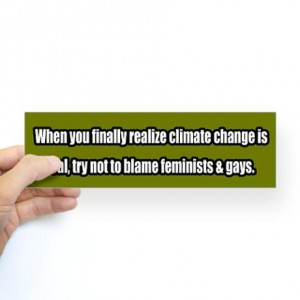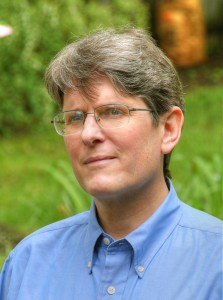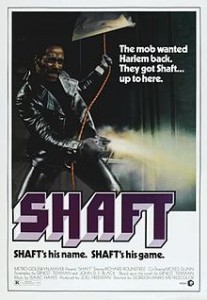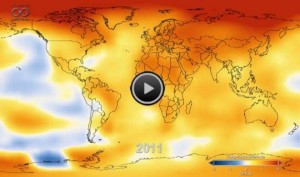It appears likely that the 2013 Maryland General Assembly may take up the issue of pollution trading in the context of regulatory efforts to establish a growth offset program in support of the Chesapeake Bay TMDL.
On first blush it may appear as if environmental advocates will be challenged to organize an effective response. This is in part because much media coverage of pollution trading has used the issue as a platform for telling another story – that oldie but always goodie about environmentalists fighting with one another.
There is some basis for this story. There was a significant skirmish over the prospect of some environmentalists suing to remove trading from the Bay TMDL, but things have remained relatively peaceful since the suit was actually filed. Efforts to undermine the suit continue, but they are mostly outside of the public earspace. Notwithstanding this, the ‘enviros at odds over trading’ narrative has established a secure hold on the journalistic imagination.
We would all do well not to get caught up in this false narrative. Not only does it misstate the reality, but it may cause us to misperceive our real opportunities and challenges.
The convenient storyline about environmentalists fighting over trading misstates the degree of environmental support for trading by confusing tactical differences over how to confront it with strategic differences over whether to promote it. Most environmentalists with whom we engage do not embrace pollution trading as a preferred water quality improvement strategy. They recognize that its principal purpose is to enable and facilitate continued economic growth. By outsourcing pollution control responsibility from regulated point sources (e.g. industrial dischargers, combined animal feeding operations and wastewater treatment plants) to unregulated non point sources (e.g. agriculture) it allows the point sources to increase their discharges. If we think of pollution reduction as a public debt incurred by certain forms of economic development, trading allows some polluters to move their debt onto other polluters books, in order that they can take on more debt.
The hope is that a vibrant market can be generated because it is easier and cheaper to control some sources of nutrient pollution than others. It is significantly cheaper for farmers to reduce a pound of nitrogen than it is for power plants. The expectation is that this differential will produce willing buyers and sellers. Instead of paying more to reduce their own pollution, power plants and other point sources will pay less to get farmers to reduce theirs.
The most optimistic take on this is that it ‘unleashes market forces’ to identify and engage the most cost efficient pollution reductions. The least optimistic take is that it doubles down on the voluntary strategy – paying farmers to pollute less – that virtually everyone (outside of the agricultural community) agrees has failed the Chesapeake Bay over the last thirty years.
This pessimism is grounded in concerns about accountability. Regulated point sources are by definition the most accountable polluters. They have permits that govern their discharges and they are subject to an enforcement and compliance regime. Unregulated non point sources – which have none of this – are the least accountable. Most environmentalists with whom we speak fear trading because it allows polluters to outsource pollution control responsibility from the most accountable to the least accountable venues.
At the tactical level the important difference between these environmentalists is that some believe trading is not just a bad idea, but also an illegal idea. They believe that the EPA does not have the authority to authorize this outsourcing of pollution control, and that doing so undermines the spirit and the letter of the Clean Water Act. They feel, therefore, that it is necessary to prevent the EPA from doing this.
Others have determined that their best response to the risks of trading is to work to make it – in practice – less harmful. They are skeptical about the prospects for eliminating trading and are therefore working to secure trading rules that will protect and even advance the public interest. Their efforts are focused on reestablishing the pollution control accountability that trading undermines, and instituting what amount to ‘transaction taxes’ to compel polluters to pay down their debt. This is useful work that we support. We recognize, however, that the ‘mend it don’t end it’ crowd is up against powerful financial interests who want the market to be governed by rules that will maximize their opportunity for profit. If the last thirty years have taught us anything after all, its that once unleashed, market forces are not so easily brought to heel.
(I confess to being a little amused observing the way that some environmentalists have backed themselves into a corner in which they are trying to ‘unleash’ and ‘leash’ market forces simultaneously. There is obviously another important conversation worth having here about the role of metaphor in political speech. George Orwell’s “Politics and the English Language” is probably the place to start, but we’ll have that conversation another day.)
It is not unusual for different environmental groups to adopt different tactics to confront a danger about which they largely agree. Often – as in this case – these different tactics can be compatible and complementary. Differences over tactics should not be confused for differences over objectives. To the extent that there is tension between those working to ‘fix’ trading and those suing to end it, we think that tension is less a function of different views about trading and more a function of different views about the risks of litigation.
At issue here are concerns that the litigation may undermine the entire TMDL/WIP process. There is concern that it will merge in the public mind with the Farm Bureau’s lawsuit that seeks to undo the TMDL. There is concern that it will provide aid and comfort to politicians and decisions makers who are resisting the TMDL and the WIPs. There are concerns that, if successful, it may result in vacating the entire Bay TMDL and also that, successful or not, it may generate calls to open the CWA to amendment.
We find some of these concerns more compelling than others. We believe, for example, that the difference between the trading litigation and the Farm Bureau litigation is obvious and familiar. The Farm Bureau believes EPA has done too much, while the plaintiffs in the trading suit believe EPA hasn’t done enough. It really isn’t difficult to understand or convey that difference, and claiming otherwise sows the confusion it purports to avoid.
We are also less compelled by the argument that the litigation will generate uncertainty that bolsters opposition to the TMDL/WIP process. This has usually been communicated to us by folks who also tell us that the Farm Bureau is already moving heaven and earth to scuttle the TMDL/WIP process. While we expect that trading litigation may help bolster resistance and recalcitrance from local officials, we doubt that the additional impact is likely to be more than marginal. To borrow a preferred metaphor of trading advocates, the resistance train has long since left the station.
Concerns about the impact of litigation outcomes strike us as more serious. Were the litigation to result in vacating the TMDL the consequences would be significant and might significantly stall the whole Watershed Implementation Planning process. We think this concern needs to be discounted by its likelihood. The plaintiffs in the trading litigation do not believe vacature is necessary, will not seek it as a remedy, and would likely oppose it if the judge ordered it. From our lay perspective it seems as if the TMDL does not require trading, simply allows it. Trading does seem to be more intricately woven into the fabric of the state and local WIPs, although more conceptually than quantitatively. Litigation could provide clarity about the extent to which it is legal for states and municipalities to rely on trading. While a finding may cause distress and complications, it may well be better to establish clarity now, rather than several years from now.
Nevertheless, this is a serious concern that we would not blithely dismiss. It is important to point out, however, that concerns about the TMDL being vacated are concerns about the success of the litigation. If the TMDL were vacated it would probably mean that a Federal Court had determined that trading does illegally undermine the Clean Water Act in the way that the plaintiffs claim. Opposing the litigation out of fear that it will be successful indicates a willingness to accept undermining the Clean Water Act in order to preserve the possibility that the TMDL and WIPs as currently constituted will make progress in cleaning up the Bay.
We make this point with due regard for the years of effort to clean up the bay and a corresponding belief that honorable environmentalists can have different positions about this kind of trade off. It does seem, however, that the tradeoff needs to be framed and faced squarely. Doing so might help us to distinguish between strategically important intra-environmental differences and the less important tactical differences over which we sometimes tend to obsess.
In this context, the strategically important intra-environmental differences concern the contexts within which Bay restoration efforts occur. Recognizing that pollution trading poses threats to various values – like the integrity of the Clean Water Act, the health and safety of low income communities, and the reassertion of public control over public resources – the most committed opponents of pollution trading are driven, in part, by the fact that they perceive there to be more at stake than simply the health of the Chesapeake Bay.
I don’t believe that those working to improve pollution trading schemes are indifferent to these other values, but I do believe that, for them, these are, at most, secondary and distinct concerns. I have written elsewhere of the view of environmentalism as fundamental and independent, untethered by ideology and disconnected from other values, and of how this view inclines many to try and orient their work so as to most effectively and efficiently catch whatever appears to be the dominant stream. There is a strong strain of independent environmentalism in Bay restoration work, and it drives and defends our perpetual quest for ‘unlikely’ allies and ‘unusual suspects’. It also promotes a sort of strategic vacuity – if your mission can be served, and your goals realized, in a variety of different social and political arrangements, most of your decisions tend to be tactical ones.
I think that the most interesting differences between the most committed opponents of pollution trading and the ‘mend it don’t end it’ crowd is a strategic difference. I think that the most committed opponents believe (or at least suspect) that sustainability – the authentic, robust sustainability that we require – may be an emergent property of a more just, democratic, and equal society, and not simply a correction that can be grafted onto any society. I think that they understand environmental protection to be an interdependent, ideologically inflected value that necessarily privileges questions of vision and strategy.
From this perspective, the tactical decision to work to end (not simply mend) pollution trading is informed by strategic calculations about the constellation of values that we need to strengthen, the ideological commitments that we need to broaden, the type of society that we should be striving for, who else is pointed in that direction, and when, how and where we can join with them. It is not simply an effort to catch (or avoid being run over by) the dominant stream, but part of a broader effort to generate an alternative stream that moves powerfully in the direction that we need to go. This difference – a difference that is really about strategy and vision, rather than about tactics – is, in my judgment, the difference that really matters.
This could be a productive difference. The most committed opponents of trading recognize that part of the long process of generating the alternative stream that we need involves opening and maintaining space to interrogate critical features of the dominant stream. These are features that remain largely uninterrogated as the ‘mend it’ crowd jumps (even if reluctantly) onto the trading bandwagon.
Being more inclined towards skepticism over the fetishization of markets and technology, and more committed to locating their Bay advocacy within a vision of a different and better society, the trading plaintiffs recognize that the trading conversation creates an opportunity for asserting key questions that are seldom posed in the Bay restoration conversation:
- How long can we expect technology and market machinations to outpace the impact of population growth in the Bay watershed? When will our ability to reduce our pollution footprints be overridden by the number of new feet?
- What does the increasing financialization of nature (and the deepening hegemony of market fundamentalism of which it is a part) portend for the maintenance of public ownership of public resources? What will that mean for the Bay in 2030, or 2040?
- What will be the value (or, for that matter, the durability) of a restored Bay in an increasingly degraded and unequal society ? What will be the consequences if our efforts to restore the Bay deepen and aggravate those inequities ?
Many in the ‘mend it’ crowd recognize that these are crucial questions. They insist, however, that they are impractical and can have no meaningful influence in the present environment. Their insistence, of course, helps to make and keep this true.
I think that a more creative and confident environmental community would embrace the trading litigation as an opportunity to engage the kinds of bigger questions and values that matter to people much, much more than the small, technical conversations around which their ‘mend it’ work is organized. Doing this would not require dropping their current work to reform trading, and it would not entail any hypocrisy or contradiction. It would simply involve acknowledging that the fact that we must play the cards that we are dealt does not preclude our continuing to aspire (and conspire) to change the game.







